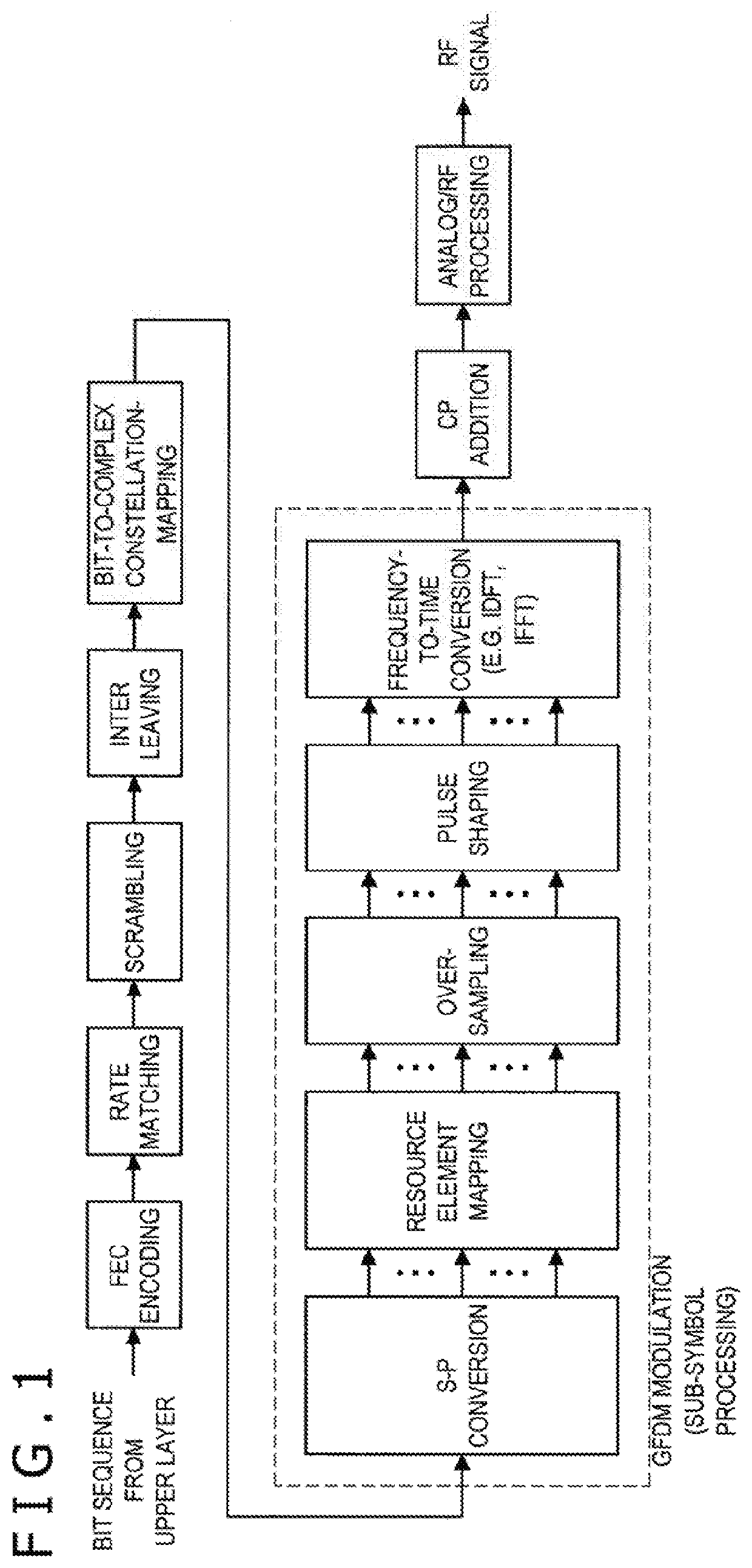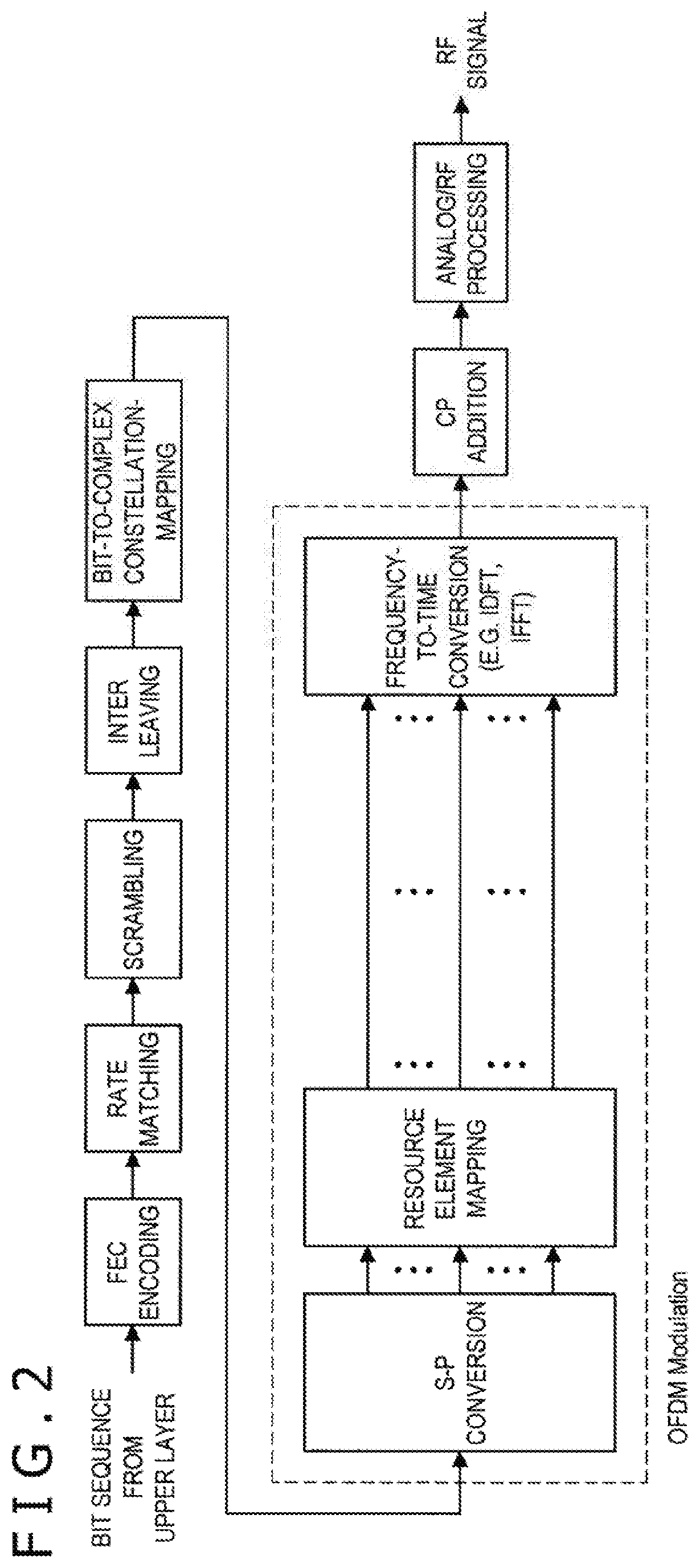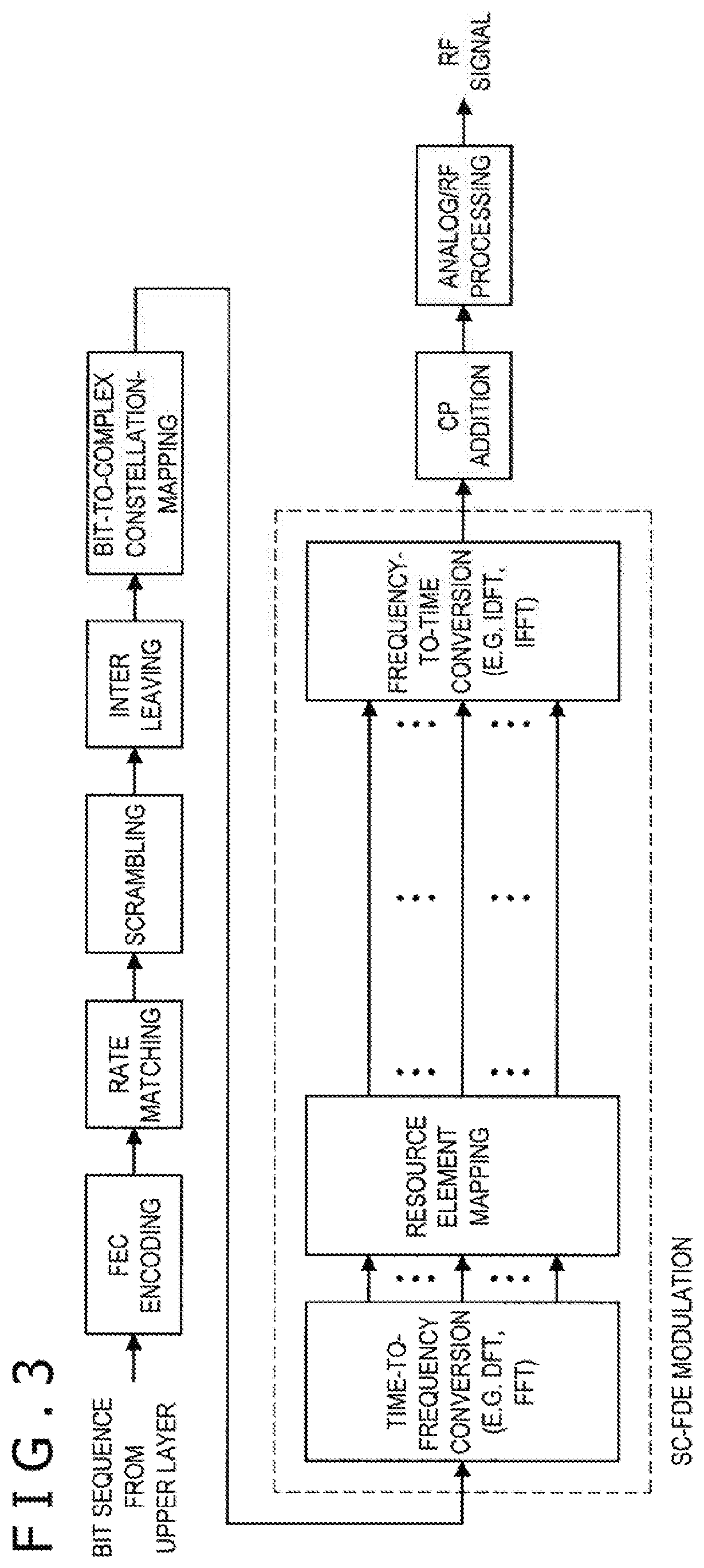Transmitting apparatus, receiving apparatus, method, and recording medium
a technology for receiving apparatuses and transmitting devices, applied in electrical apparatuses, digital transmission, orthogonal multiplexes, etc., can solve problems such as the inability to meet the requirements of a large number of people, so as to achieve the effect of enhancing the resistance against interferen
- Summary
- Abstract
- Description
- Claims
- Application Information
AI Technical Summary
Benefits of technology
Problems solved by technology
Method used
Image
Examples
application example
5. Application example
6. Conclusion
1. INTRODUCTION
[0063]The technique associated with one embodiment of the present disclosure will be described hereinafter.
1.1. Waveform Modulation Scheme
[0064]As examples of a waveform modulation scheme, GFDM, OFDM, and SC-FDE will be described hereinafter.
(GFDM)
[0065]FIG. 1 is an explanatory diagram for explaining an example of a configuration of a transmitting apparatus that supports GFDM. With reference to FIG. 1, a bit sequence (for example, transport block) from an upper layer is processed and an RF (radio frequency) signal is output. As depicted in FIG. 1, FEC (Forward Error Correction) encoding, rate matching, scrambling, interleaving, and mapping from a bit sequence to symbols (which may be, for example, complex symbols and can be also referred to as “signal point”) (Bit-to-Complex Constellation Mapping) are performed on the bit sequence, and modulation is then performed. In the mapping from the bit sequence to the symbols, various constell...
first example
(2.1) First Example
[0104]FIGS. 8 to 11 are explanatory diagrams for explaining an example of a configuration of a first transmitting apparatus that supports GFDM according to the present embodiment. First, the transmitting apparatus performs a process depicted in FIG. 8 and then a process depicted in FIG. 9 per user. The transmitting apparatus then performs processes depicted in FIGS. 10 and 11 per transmit antenna port. These drawings depict an example of a configuration in a case of supposing that the transmitting apparatus transmits a GFDM signal to one or more users by multi-antenna transmission. In other words, the number of users (or number of receiving apparatuses) is Nu≥1, and the number of transmit antenna ports (or number of transmit antennas) is NAP≥1. It is noted that the number of users is denoted by U and the number of transmit antenna ports is denoted by P in the drawings.
[0105]In a first example, an OFDM transmitted signal process depicted in FIG. 2 is extended to re...
second example
(2.2) Second Example
[0123]FIGS. 12 and 13 are explanatory diagrams for explaining an example of a configuration of a second transmitting apparatus that supports GFDM according to the present embodiment. Similarly to the first example, the transmitting apparatus according to a second example performs the process depicted in FIG. 8 and the process depicted in FIG. 9 per user. The transmitting apparatus according to the second example then performs processes depicted in FIGS. 12 and 13 per transmit antenna port. A difference of the second example from the first example is that domains of signal processing are in order of time, frequency, and time domains. Specifically, a part regarded as the process per user in the first example is a process in the time domain in the second example.
[0124]In the second example, an SC-FDE transmitted signal process depicted in FIG. 3 is extended to realize the GFDM transmitted signal process. The present transmitted signal process is particularly charact...
PUM
 Login to View More
Login to View More Abstract
Description
Claims
Application Information
 Login to View More
Login to View More - R&D
- Intellectual Property
- Life Sciences
- Materials
- Tech Scout
- Unparalleled Data Quality
- Higher Quality Content
- 60% Fewer Hallucinations
Browse by: Latest US Patents, China's latest patents, Technical Efficacy Thesaurus, Application Domain, Technology Topic, Popular Technical Reports.
© 2025 PatSnap. All rights reserved.Legal|Privacy policy|Modern Slavery Act Transparency Statement|Sitemap|About US| Contact US: help@patsnap.com



